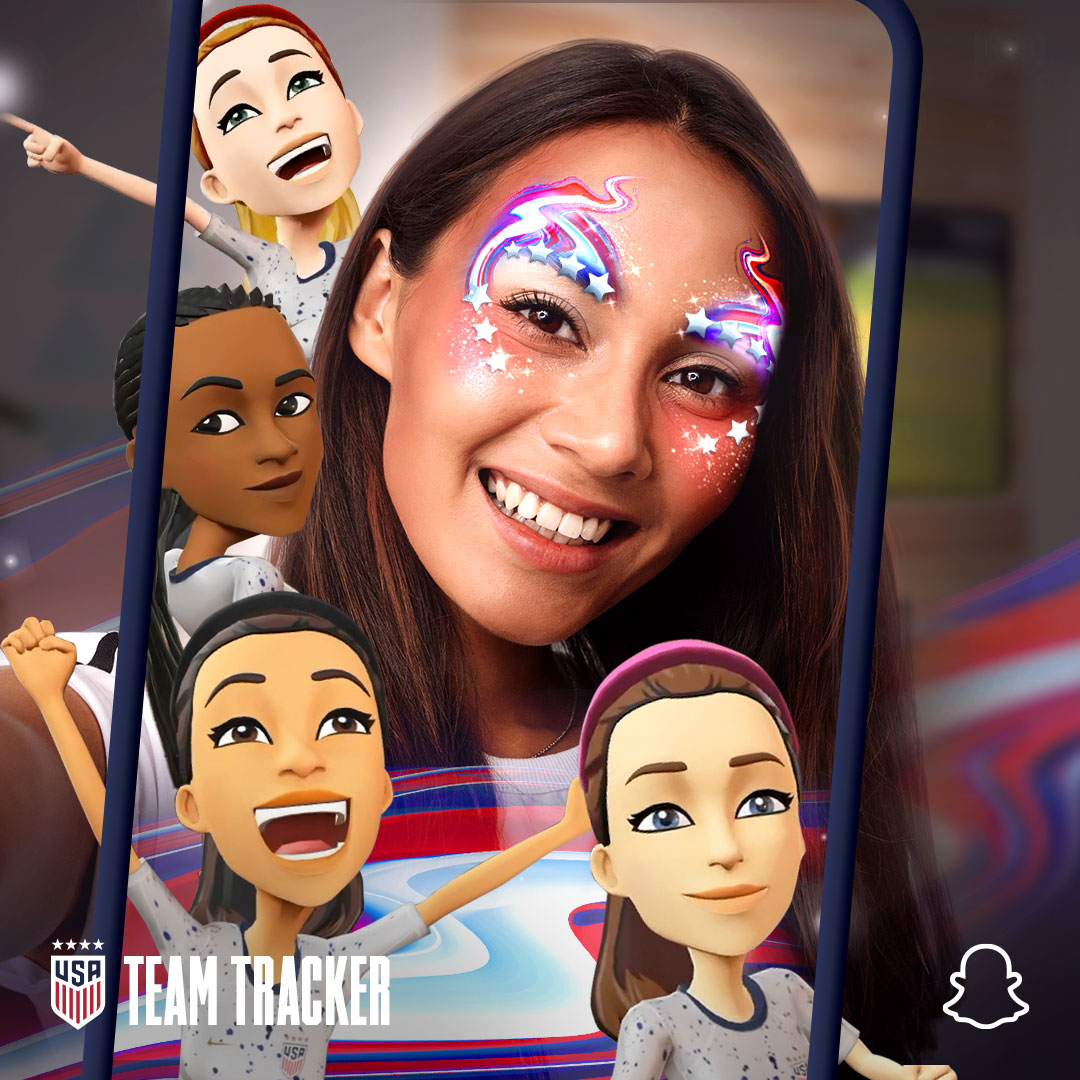Snapchat’s Kahlen Macaulay on engaging with Gen Z and younger sports fans
Snapchat is arguably best known as a messaging app, but the use of augmented reality experiences by clubs and federations and the creation of behind-the-scenes content has placed Snapchat at the forefront of the ever-evolving sports landscape, according to Kahlen Macaulay, senior manager of international sports partnerships at Snapchat.
During this conversation with SVG Europe, Macaulay explains how Snapchat is being used to engage with younger fans and the content strategies used by clubs and brands.
For those who might not be familiar, can you tell us how Snapchat positions itself and who in terms of clubs and federations Snap is working with, and how?
Kahlen Macaulay: Snapchat is really a technology company that’s focused on visual communication; we empower people and friends to connect and experience the world together. So one of the objectives of what we do is bring relationships together, and of course, sport is such a key way of connecting communities.

Kahlen Macaulay, senior manager of international sports partnerships at Snapchat
To give you an overview of what Snapchat is, and what we do, one major point differentiation is we’ve got 397 million people who use the app every single day. So our daily active users are nearly 400 million, which is surprising to many. That’s 750 million monthly active users, which was one in 10 people globally, and that’s spread across many markets. There used to be the perception that we were mainly a US company, but that has definitely changed; we have now more users in India, for example, the Middle East is really big for us, and in France, Snap is one of the number one apps. But the really interesting thing about our audience are the demographics: we reach 90% of 13 to 24 year olds, and when you look at 13 to 34 year olds, it’s 75%.
What does that mean from a sports perspective? Well, there’s this narrative that Gen Z are less engaged with sports as previous generations, but we find the opposite to be true. It’s just the ways in which they engage have changed.
An example is the Men’s and Women’s FIFA World Cup. We worked with broadcaster’s in every single market to ensure we had official highlights and coverage, because the expectation is if you’re on Snap, you’re only connecting with your friends, but you’re also following your interests and we’d have access to players posting content, for example.
We had teams posting content from behind the scenes, such as Saudi Arabia’s win against Argentina. So we find that we have all these different perspectives covered in a very digestible format. It means that the kind of partners we work with range from official broadcasters, to teams, leagues and athletes.
In the UK, we have a partnership with Sky Sports which means we have highlights of every single goal in the Premier League, while our partnerships in the US with the NBA and NFL mean we have every single moment covered there. But then on the flip side, we also cover the cultural side of things, with content that’s less about highlights and more about the culture.
You mentioned the age groups that Snap reaches – what kind of content really resonates with 13 to 24 year olds?
KM: The kind of content works well on Snap is quick story format content. We pioneered vertical video and now it’s become ubiquitous, and that’s great. And we also invented the stories format. So ITV Sport’s coverage of the FIFA World Cup on Snapchat is, for example, very different to their traditional broadcast, as you’d expect. We would have a summary every day, where people could get those highlights in a three-minute, compressed version. It’s really quick, and it’s just the best moments as a quick update – that kind of content really resonates.

And then what we see as well is the ability to engage an event in a different way through augmented reality, through Bitmojis (personal avatars) and other tools.
Some people might be put off by the thought of augmented reality, but we have technology that we have been investing in for 10 years (Snapchat is 12 years old) and we have an audience that uses it every single day; 250 million people on Snapchat use augmented reality every day to express themselves. It used to be used for things like vomiting rainbows and puppy dog ears, but now you can try on the latest Manchester United jersey, and swipe up to buy it.
And for those rights-holding broadcasters that are using Snap, what do they need to do in order to get the most out of Snap?
KM: They have to think differently about how they present their product on Snap, just as they would on any platform. And they need to think about how their audience is consuming that content.
There has been a lot of talk about the fight for attention in the first three seconds of watching something, but actually, it’s more like the first second. So how you might package or present highlights from the Rugby World Cup, for example, will be very different on Snap. For broadcast, you can imagine a lovely graphic, beautiful imagery, maybe a two-second intro, and then you start the show. This audience [on Snap] is not interested in that; what you want to lead with, is a massive hit, a huge tackle or a major moment. And then you build the story after that. It’s all about really grabbing their attention in the first second with something that’s super impactful.
What kind of relationships do you have with brands, broadcasters and clubs? And how do you work with them to create content?
KM: There are a couple of points of differentiation with Snap. Firstly, we’re a closed platform, so you can’t just come onto our platform and start posting content. We have an editorial team which curates content and approves partners to come onto the platform. That’s a really big point of differentiation when you think about our younger audience, because in many ways it is an antidote to social media; we don’t have followers, we don’t have likes, we don’t have comments. We don’t want it to be a place where you have social pressure, which is particularly relevant for young people.
And when it comes to content, we select the content partners who meet our values. And so you will not have issues around misinformation and fake news, because we’re able to work with partners who are credible. That allows us to provide more guidance, so we’d probably start with a workshop on how best to reach the audience, and then they have all the tools and analytics as well. We don’t want to step on the art of storytelling, because that’s what those companies do. What we want to do is help them with their story in a way that is in line with how our audience consumes content.
And can you give us a current example of how AR is being used to good effect?
KM: Right now, with Orange at the Rugby World Cup, we’ve got an amazing AR experience which uses live data. When you’re at the game or in the area of Paris, you can hold the camera up and you can see these giant versions of the rugby players actually walking through the city centre in AR. And during the game, you can see the live score and depending on who’s winning, if a try is scored, the whole sky lights up with fireworks. It’s about creating fun touchpoints that allow a more inclusive experience for people to be part of the event that are not just the hardcore rugby fan or the hardcore football fan.
One of the really interesting evolutions of this technology is historically it’s all lived within the ecosystem of Snapchat, as in, if you want to engage with AR you have to be on Snapchat. As a company which is democratising augmented reality for all, we’re taking our technology and allowing it to be integrated into third party applications. For example, it’s available in the NFL mobile app so you can go to the NFL app with your camera experience and you can engage with every single team lens (augmented reality experience) they’ve ever built.
The next evolution is about taking augmented reality lenses and putting them onto people in the stadium…one of the funny examples was in the NFL again when the Broncos lost to the LA Rams, and the crying lens was used and then projected on the big screen, to show a crying Broncos fan. So it’s a nice evolution of the Kiss Cam.

